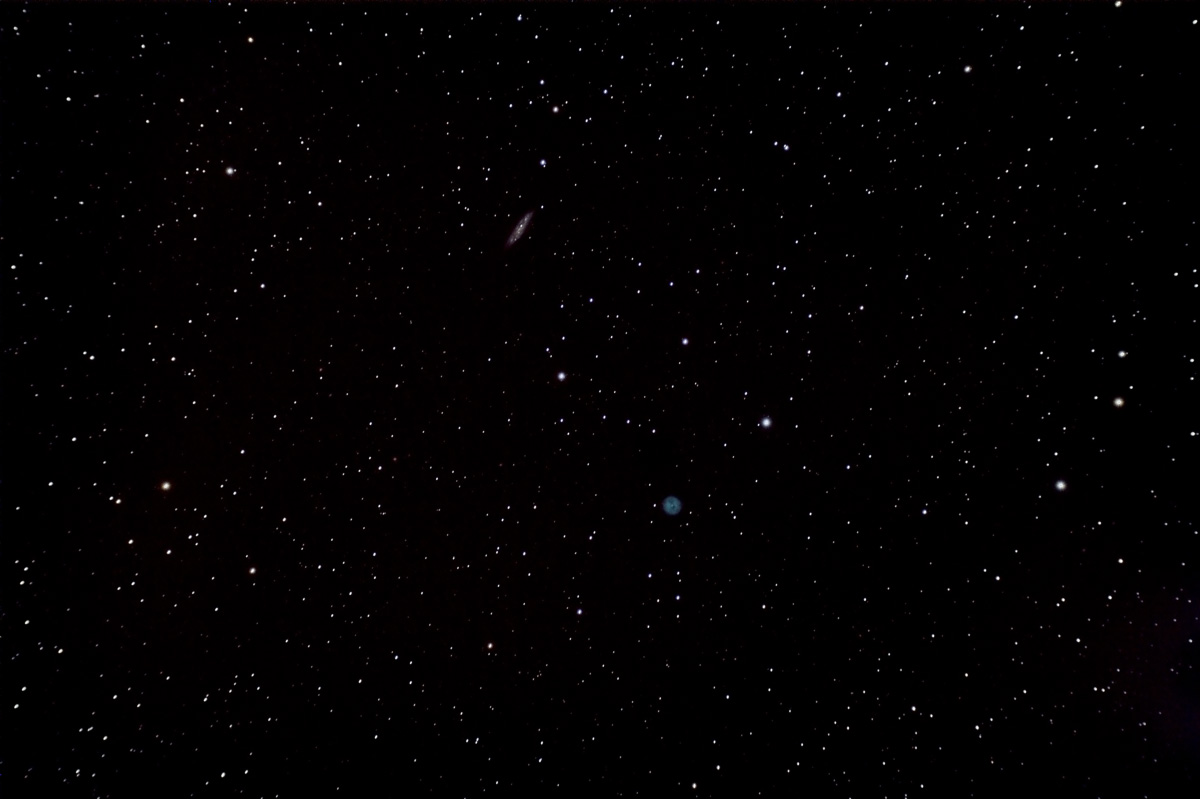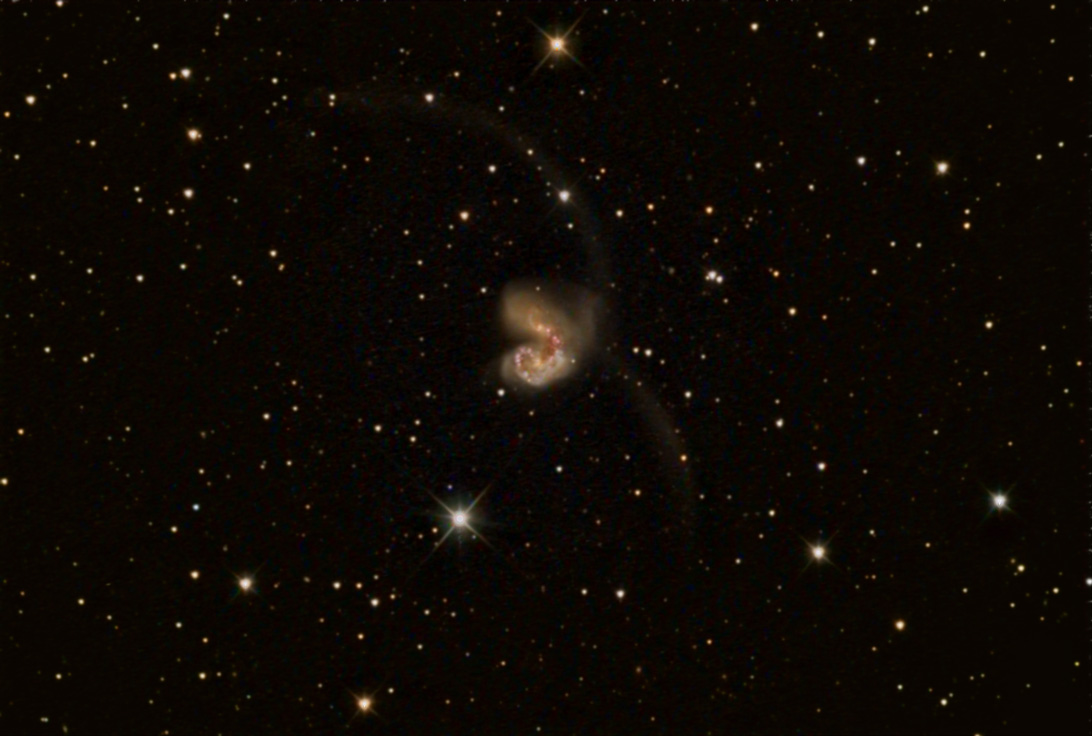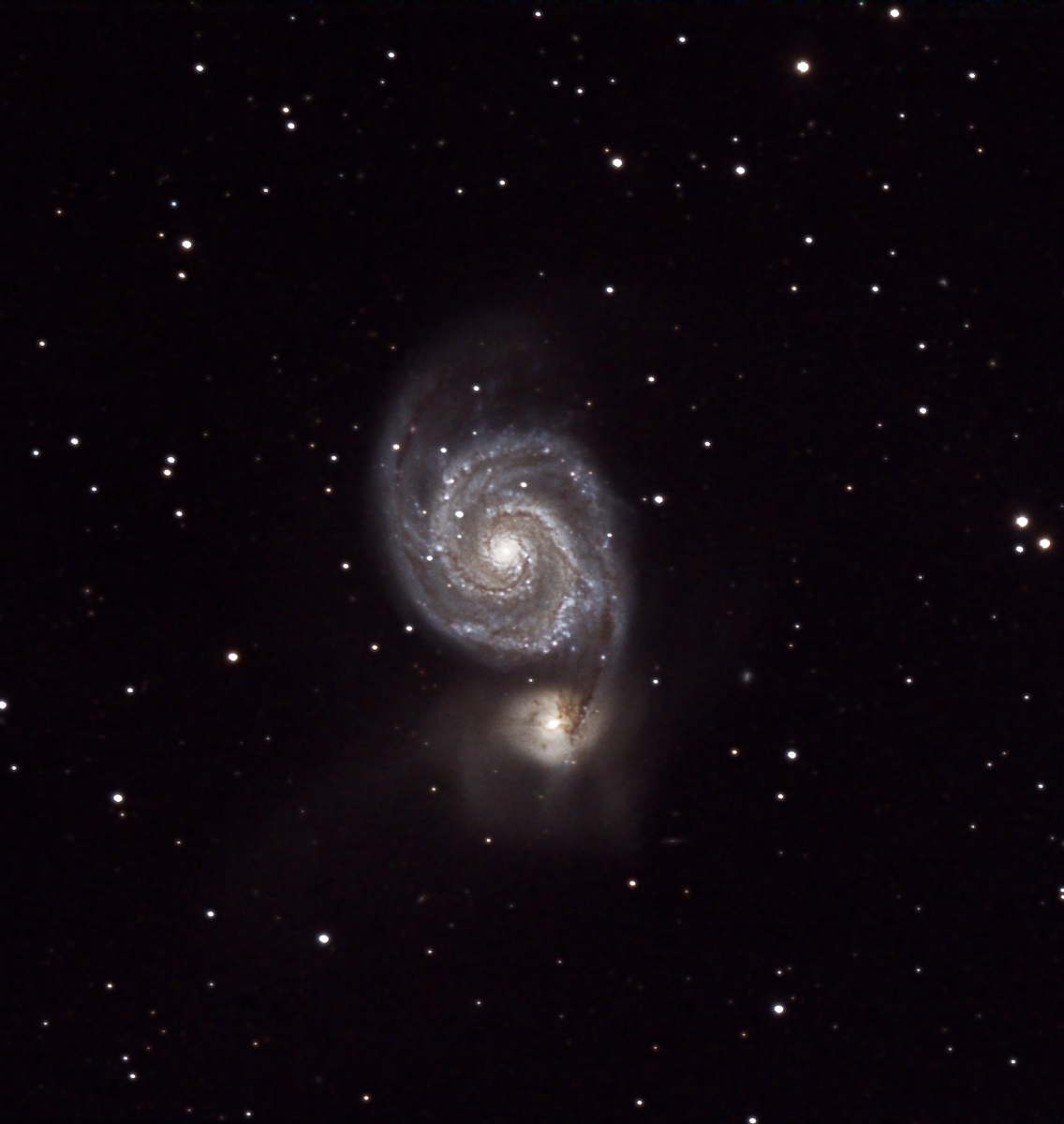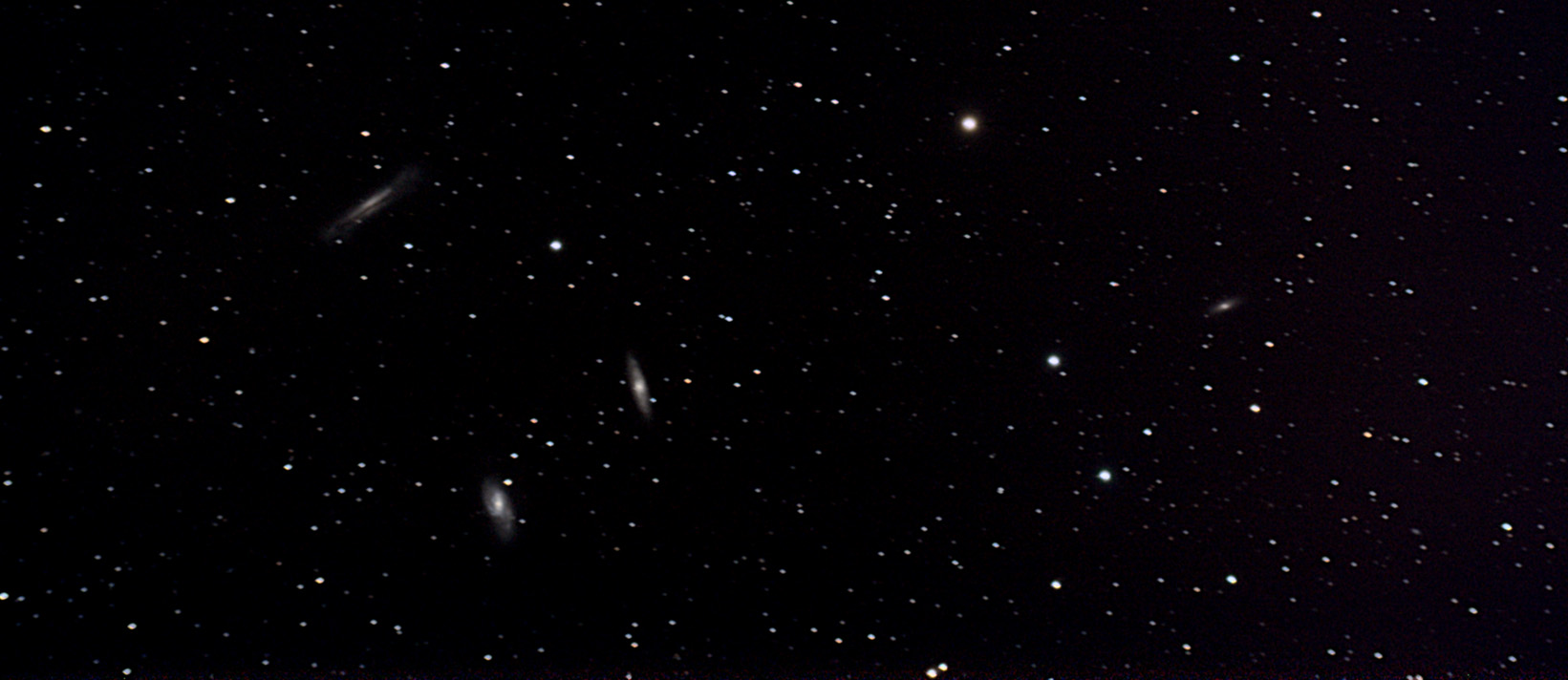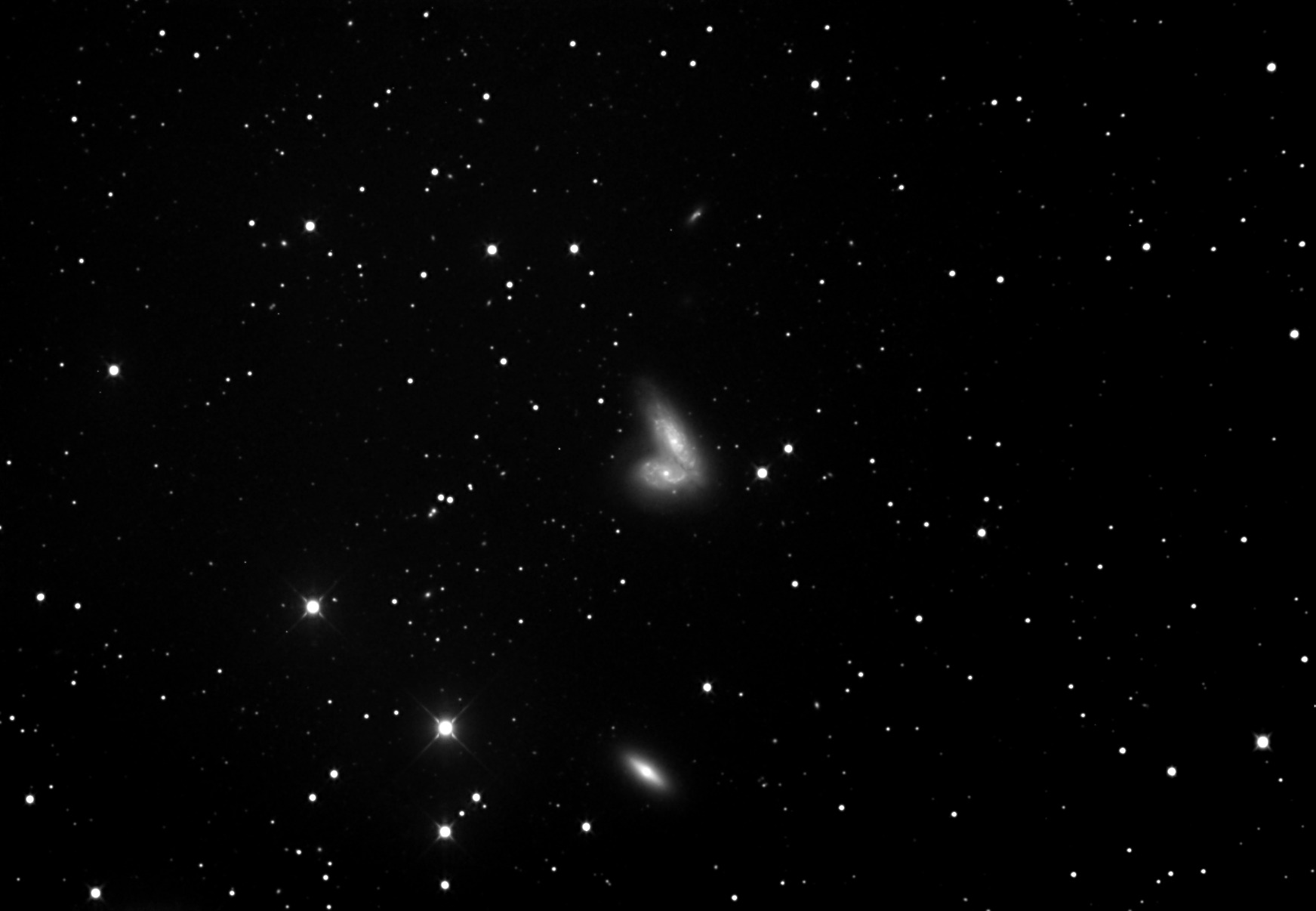One of the advantages of using a small telescope for photography is that you can get wide fields of view that help put objects within their true context. The two main objects in this picture are M97, the Owl nebula and M108. Originally I planned to use a cropped version of this picture but after some consideration I decided that the wider field was the better presentation.
M97 is the intra-galactic object at only 4140 light years distance. Despite it’s diminutive size (only 170″), it is still about 3 light years across. First observed by Mechain in 1781 Messier added it to his catalogue in march of that year.
M108 is rather further away at 46 million light years and is a member of the Ursa Major group of galaxies. The bright object near the centre is not the galaxy core but a foreground star in our own galaxy. While this galaxy was observed by Messier at the same time as M97 it was not added to his catalogue at the time and is a 20th century addition.
19 3 minute sub frames, ISO 800
Canon 350D
Zenithstar 70
Skywatcher field flattener
